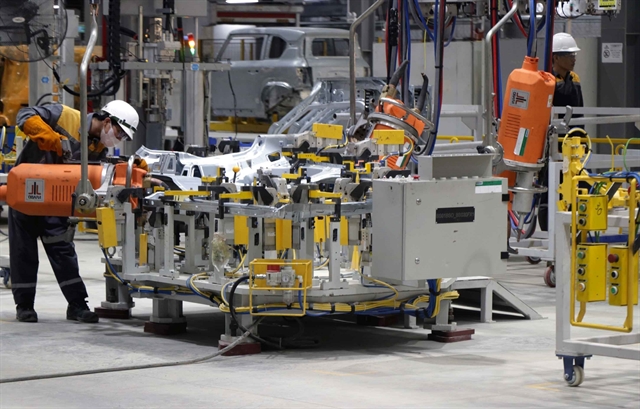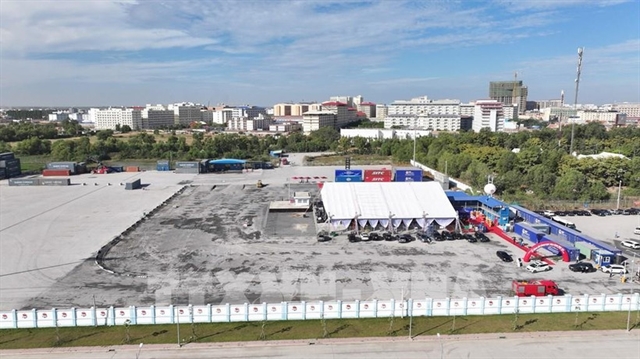 Society
Society

 |
| Lê Kim Thành, Vice Chairman of the National Traffic Safety Committee. VNA/VNS Photo Xuân Khu |
Lê Kim Thành, Vice Chairman of the National Traffic Safety Committee, talks to Việt Nam Plus online newspaper about his expectations for a significant reduction in traffic accidents this year through the implementation of public awareness campaigns, increased patrols, and enhanced enforcement and penalties for traffic violations.
The substantial increase in penalties for traffic violations under Decree No. 168 has rapidly raised public awareness and altered behaviour, and is considered a key solution to the 'traffic safety issue'. What is your view on the matter?
Since Decree No. 168 officially came into force on January 1, 2025, there has been a noticeable improvement in traffic order and safety, with reductions across all three criteria: fewer accidents, increased public awareness of traffic laws, and stricter adherence to traffic regulations.
The high penalty levels introduced in the decree have had a significant impact on the public’s compliance with traffic laws. Violations such as running red lights, driving against the flow of traffic, and using pedestrian sidewalks have seen a marked decline, especially in major cities like Hà Nội and HCM City. Road users are now more conscious of traffic signals, even in the absence of traffic police.
The elevated fines not only serve to punish violations but also act as a strong educational and deterrent tool, fostering greater awareness of the need to comply with traffic laws among both offenders and the broader community. When lighter penalties failed to achieve the desired results, increasing the fines became necessary to reduce violations and safeguard public safety, contributing to a reduction in accidents and promoting a culture of safe and civilised road usage.
How do you assess the recent crackdown on driving under the influence of alcohol, which has yielded significant results and contributed to changing public attitudes, promoting legal adherence and fostering a traffic culture?
Domestic and international studies, as well as accident causality investigations, consistently identify two major factors contributing to traffic accidents: alcohol consumption and excessive speed. In recent years, we have steadfastly developed and implemented regulations banning the use of alcohol and beer while driving, achieving positive outcomes. Campaigns and operations conducted by law enforcement during peak periods, such as holidays, have played a crucial role in changing attitudes and promoting a safer traffic culture.
The campaign message, with the slogan "If you’ve been drinking, don’t drive!" has become widely recognised and ingrained in the minds of road users. It serves as a reminder that while consuming alcohol is not illegal, driving after drinking is. It also highlighted the dire consequences of driving under the influence: "Even a small amount of alcohol can impair your ability to drive, leading to serious consequences."
In the future, we need to continue raising public awareness and encouraging voluntary compliance to change behaviour and habits. A recent survey found that 78 per cent of people support stricter alcohol level checks, while 22 per cent still believe that "a little drink is fine." This indicates that, in addition to enforcement, we must continue to push for sustainable changes in public attitudes through communication.
In recent years, traffic accidents have significantly decreased, but some particularly severe cases still occurred. As the head of the National Traffic Safety Committee, what is your assessment of the issue, and what fundamental solutions will you propose to address and resolve the persistent problem?
In recent years, traffic safety measures have achieved considerable success, with a marked reduction in the number of accidents, fatalities and injuries compared to previous years. However, some particularly severe accidents have occurred recently, highlighting the urgent need for stronger and more sustainable solutions.
The main causes of serious accidents remain the attitudes and behaviour of certain road users, drivers and transportation companies. Violations such as speeding, driving under the influence of alcohol and other banned substances, overloading and ignoring driving time regulations, particularly in long-distance buses and trucks, continue to occur. Moreover, the infrastructure system and traffic management in some areas have not kept up with the increasing number of vehicles and the rising demand for transportation.
Given this situation, I believe that several key solutions should be prioritised. Firstly, we need to strengthen law enforcement, enhance public compliance by tightening inspections and imposing penalties, especially for violations related to alcohol levels, speeding and overloading. The application of technology to monitor traffic, expanding the use of automatic ticketing cameras and intensifying awareness campaigns are all crucial steps in changing road users' behaviour.
Secondly, further investment in improving transportation infrastructure should be prioritised, with measures such as reviewing and addressing high-risk accident "black spots," enhancing the safety of dangerous intersections, expediting key transport projects, upgrading traffic signs and road markings, and promoting public transport.
Thirdly, transport companies must be held more accountable for ensuring the quality of vehicles and drivers’ health. Tightening the management of driver working hours to prevent fatigue during long-distance journeys, along with encouraging the use of technology for monitoring vehicle routes and driver behaviour, are essential.
Most importantly, road safety is not only the responsibility of authorities but a collective responsibility of society as a whole. If individuals and businesses alike enhance their awareness and rigorously adhere to regulations, we can significantly reduce accidents and ensure safety for all road users.
This year's theme of the committee is 'Safe journey, shaping the future.' Could you elaborate on the theme?
The theme highlights that our actions today will have a direct impact on the future of traffic. It is not merely a slogan but a guiding principle for ongoing efforts.
"Safe journey" underscores the need for each individual to consciously adhere to traffic laws to ensure their own safety and that of others. "Shaping the future" reflects a long-term vision: if we foster a culture of responsible, safe driving today, we will reduce the severe consequences of traffic accidents in the future.
If everyone follows the law and becomes more aware, accidents will decrease and safety will be ensured. To achieve a fundamental shift, solutions must come not only from authorities but, more importantly, from changing the mindset and behaviour of every citizen. We must all reconsider our individual responsibility in building a safe road culture.— VNS




